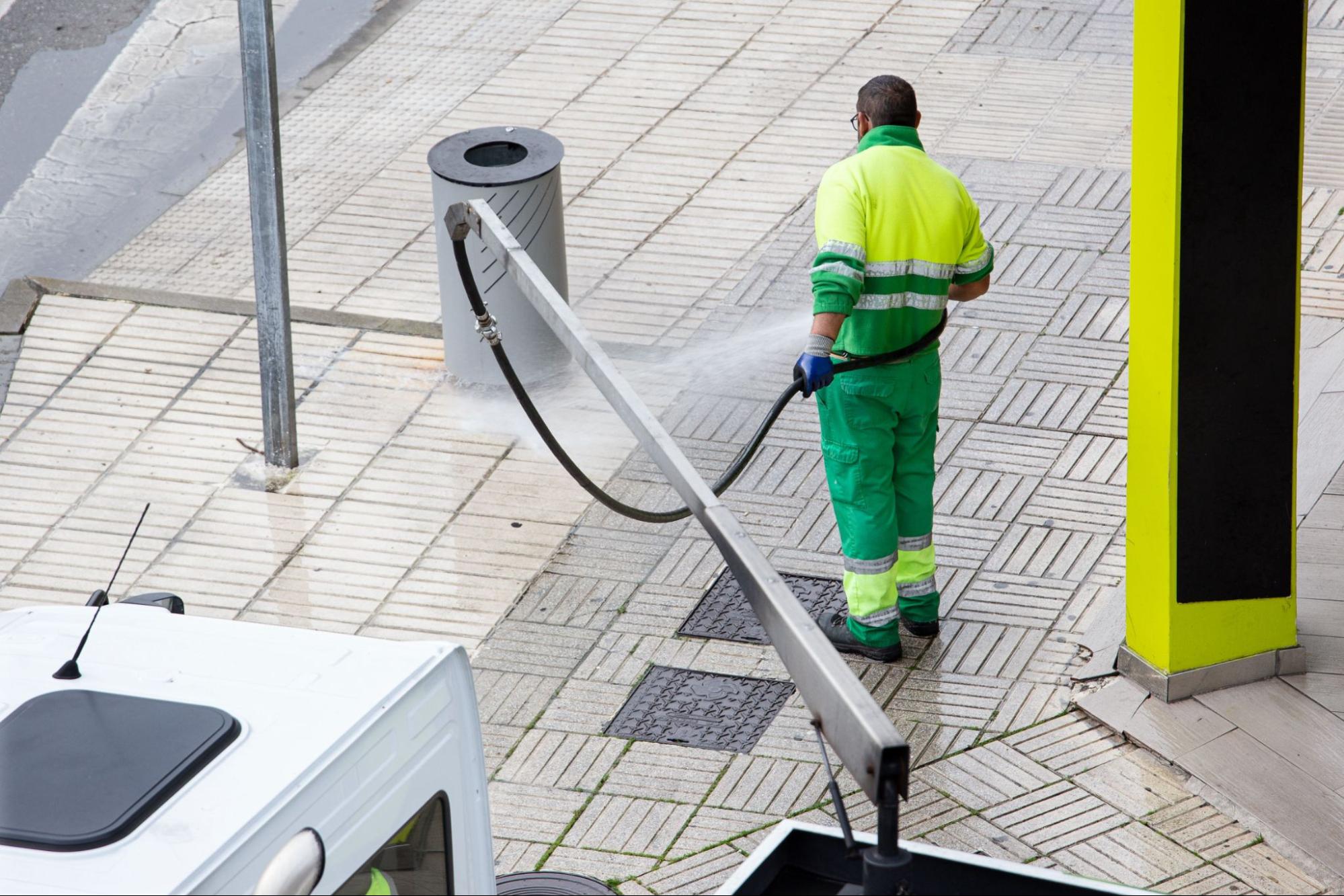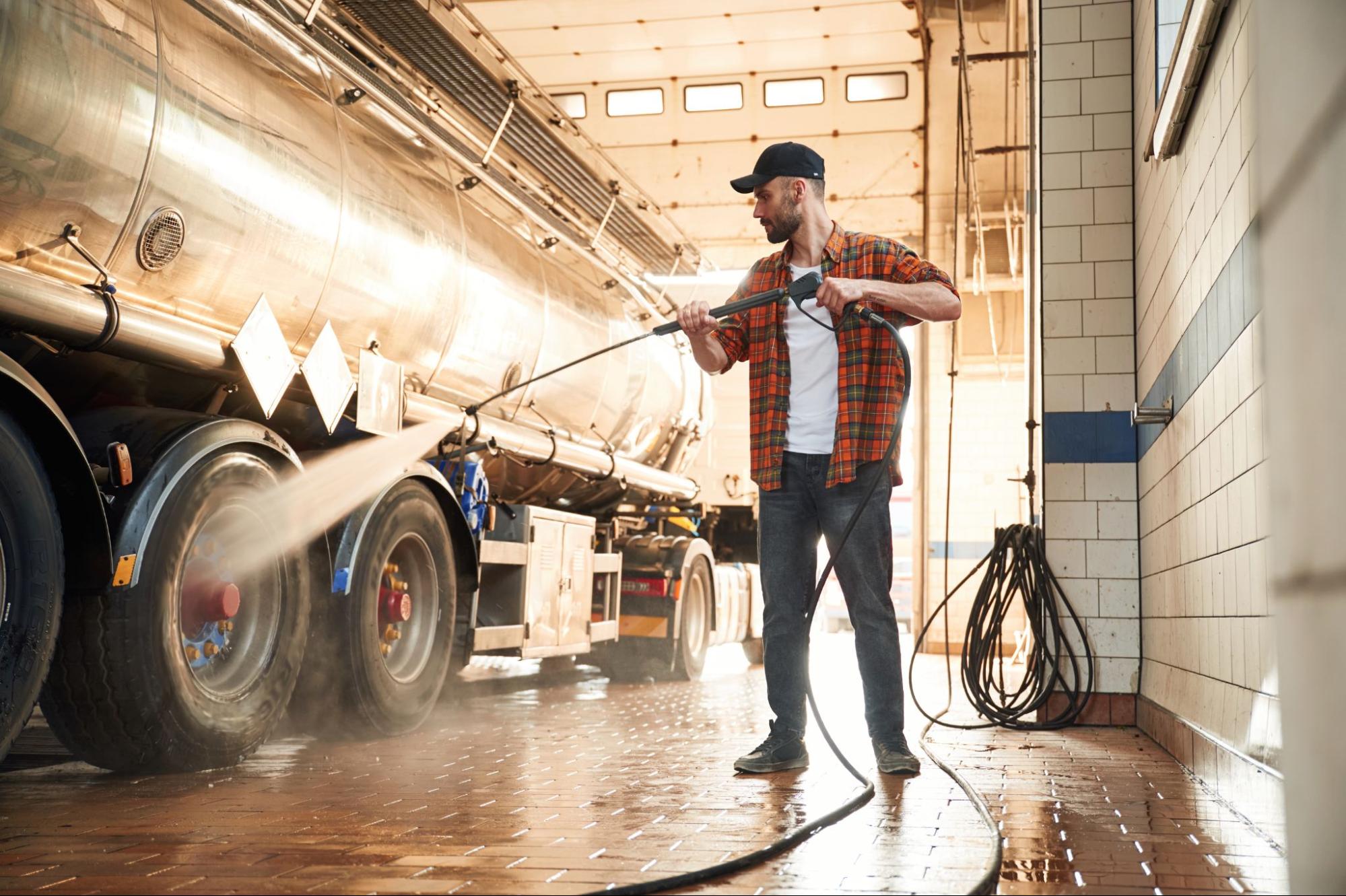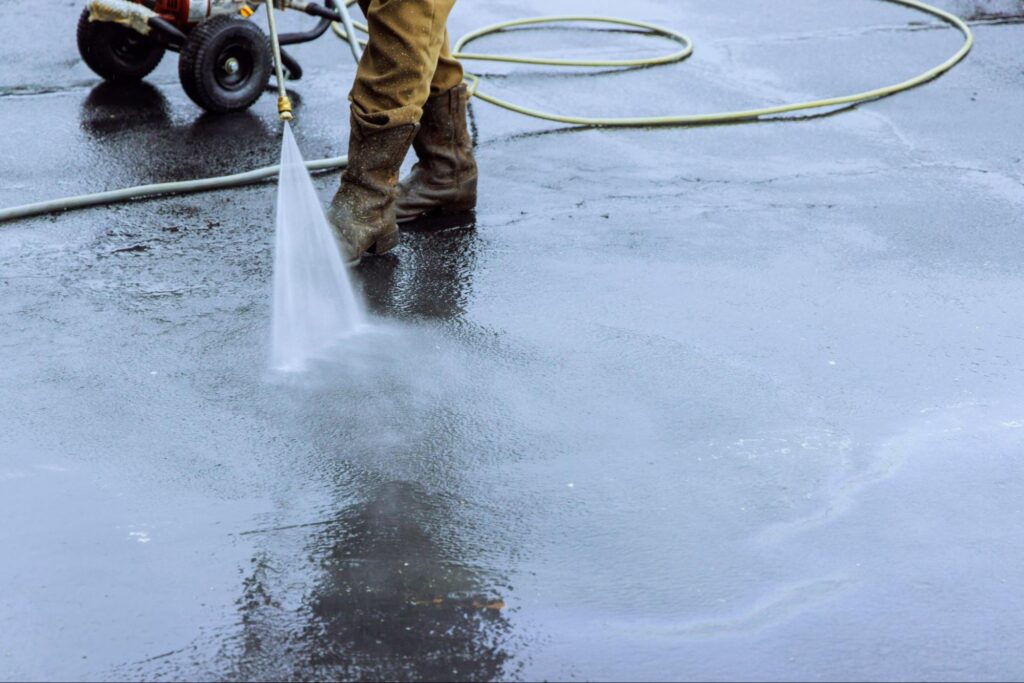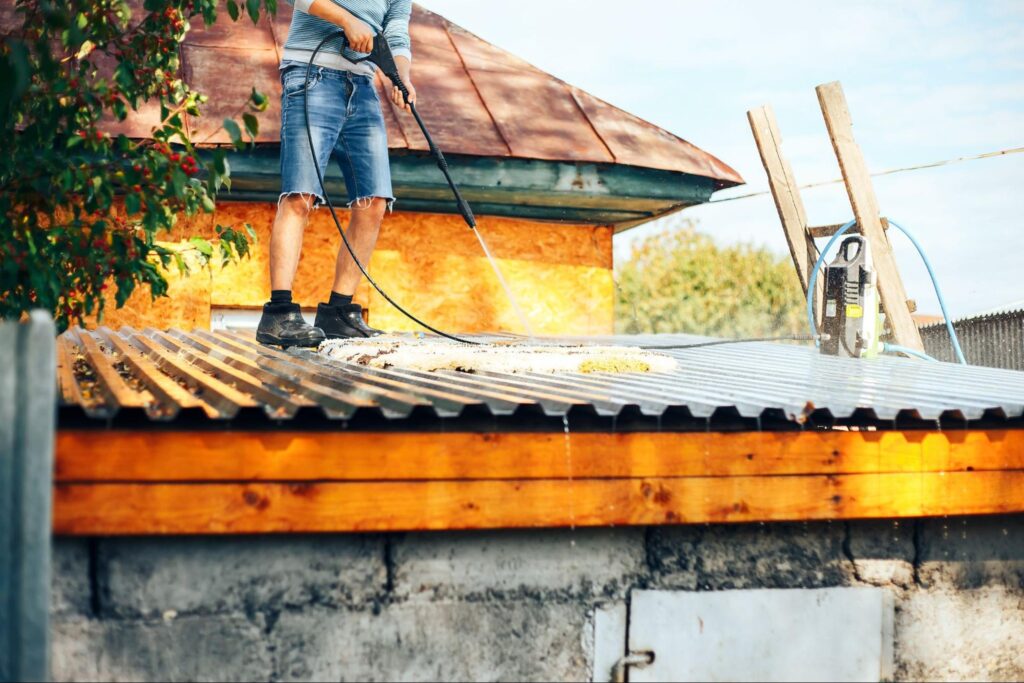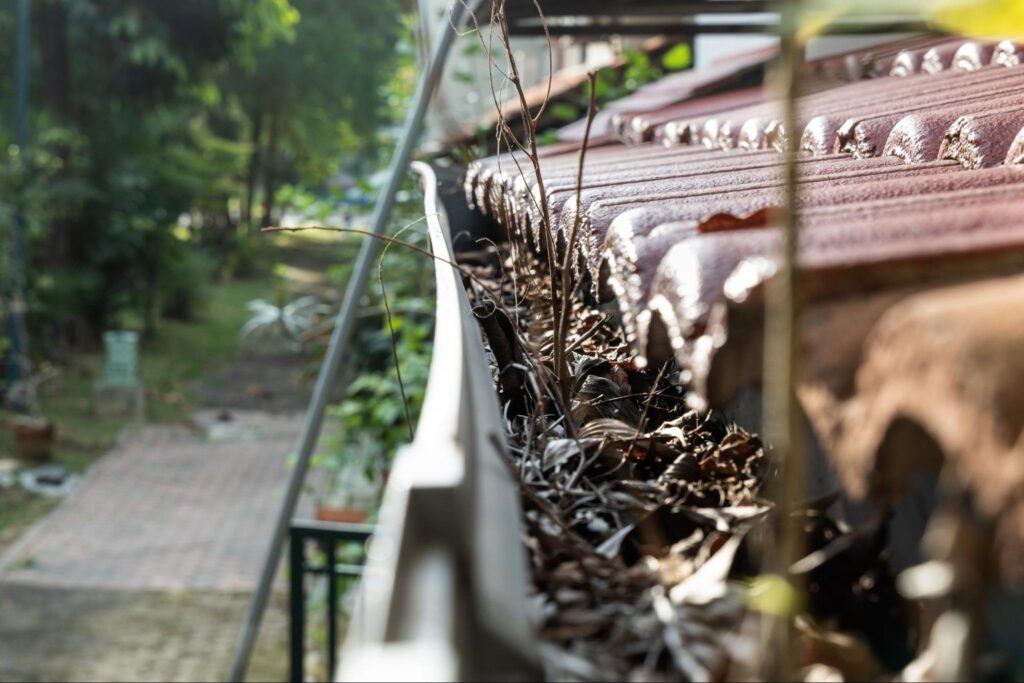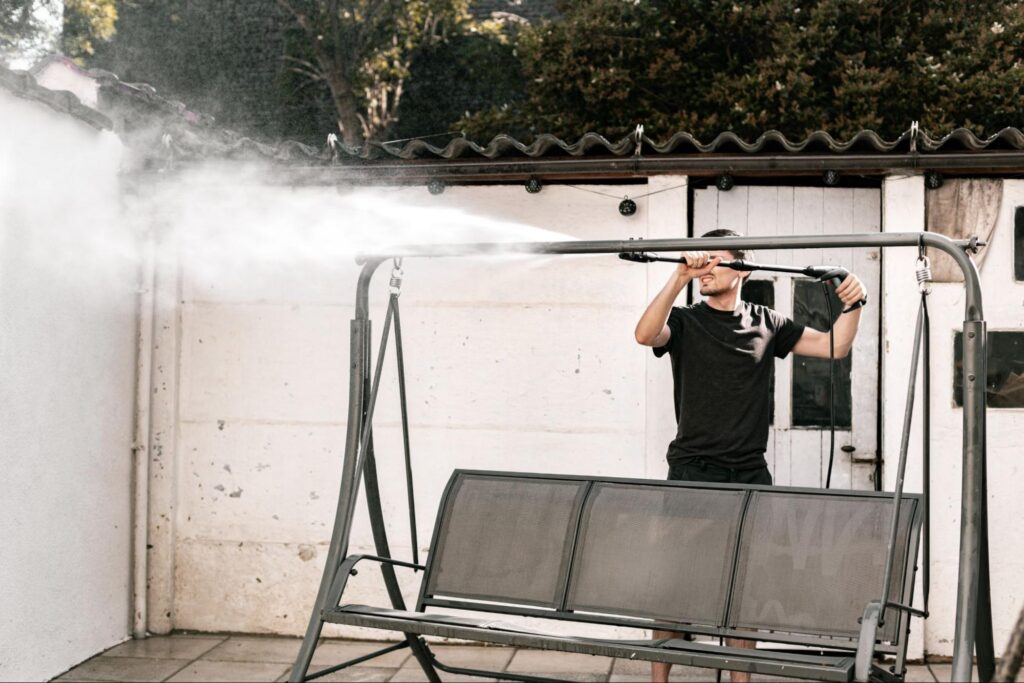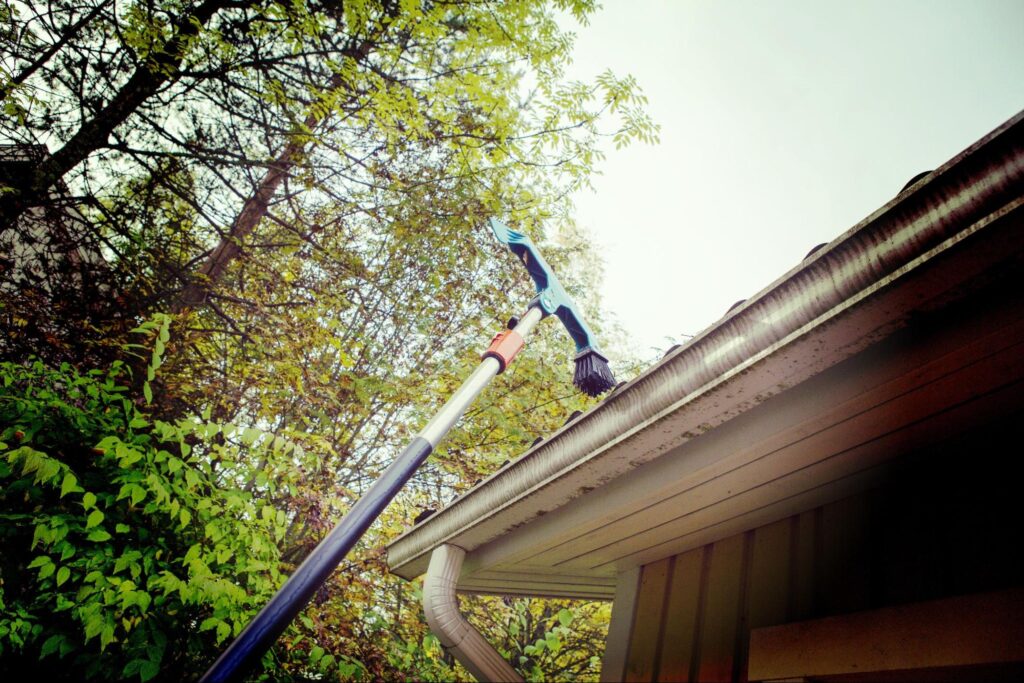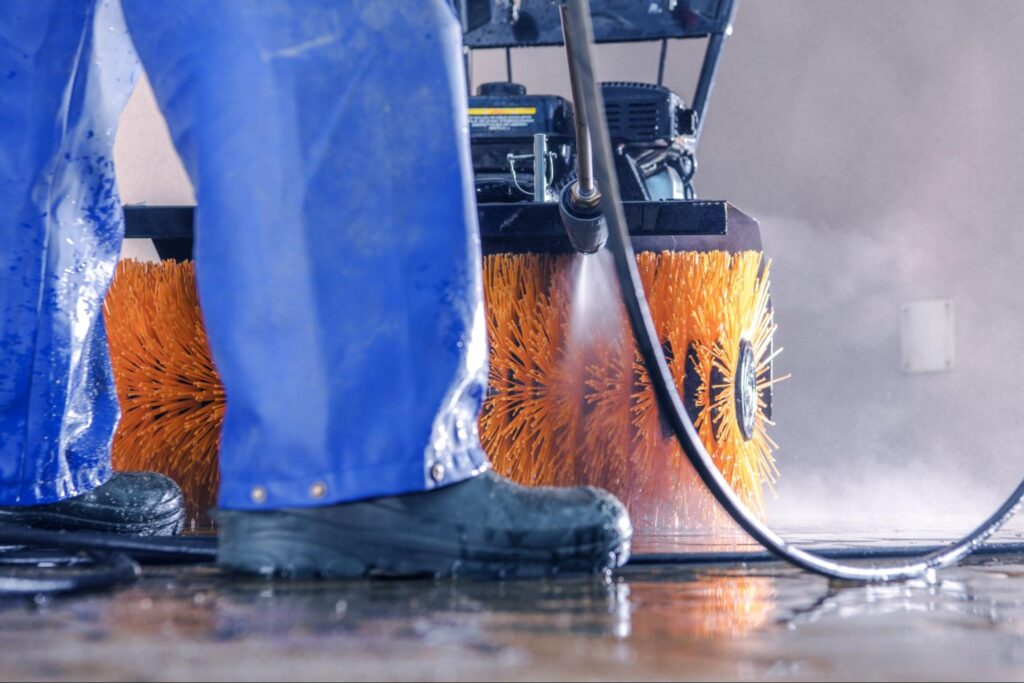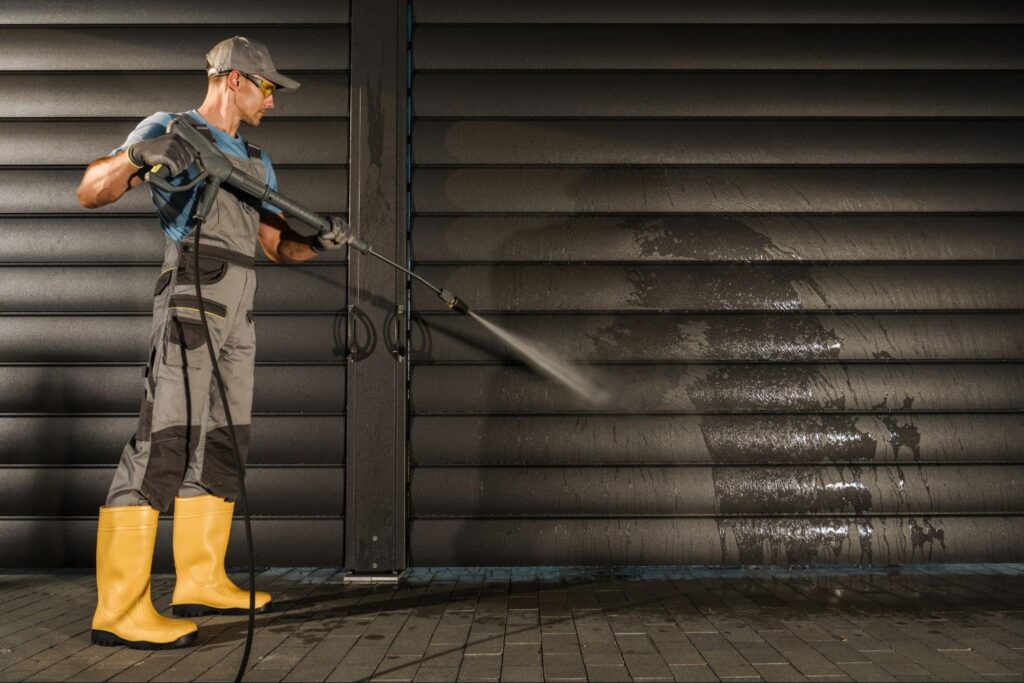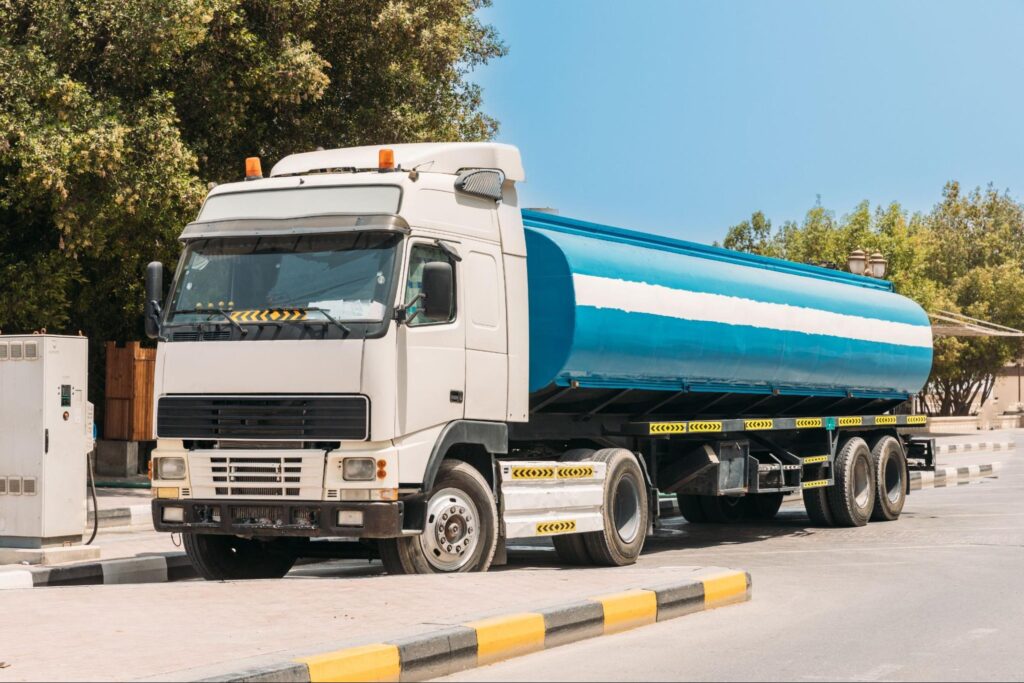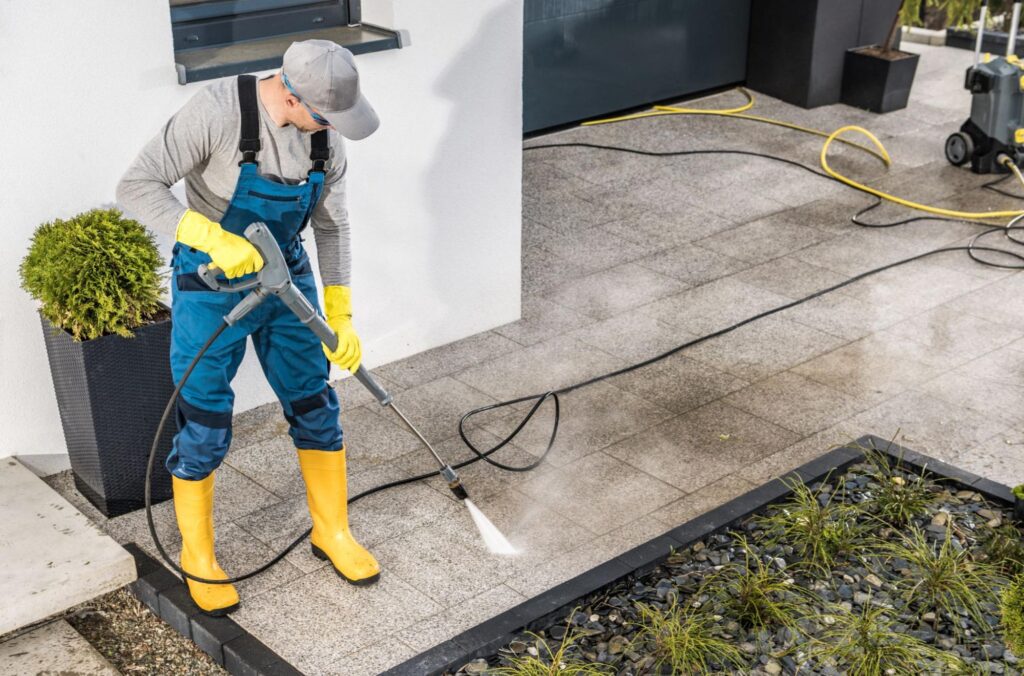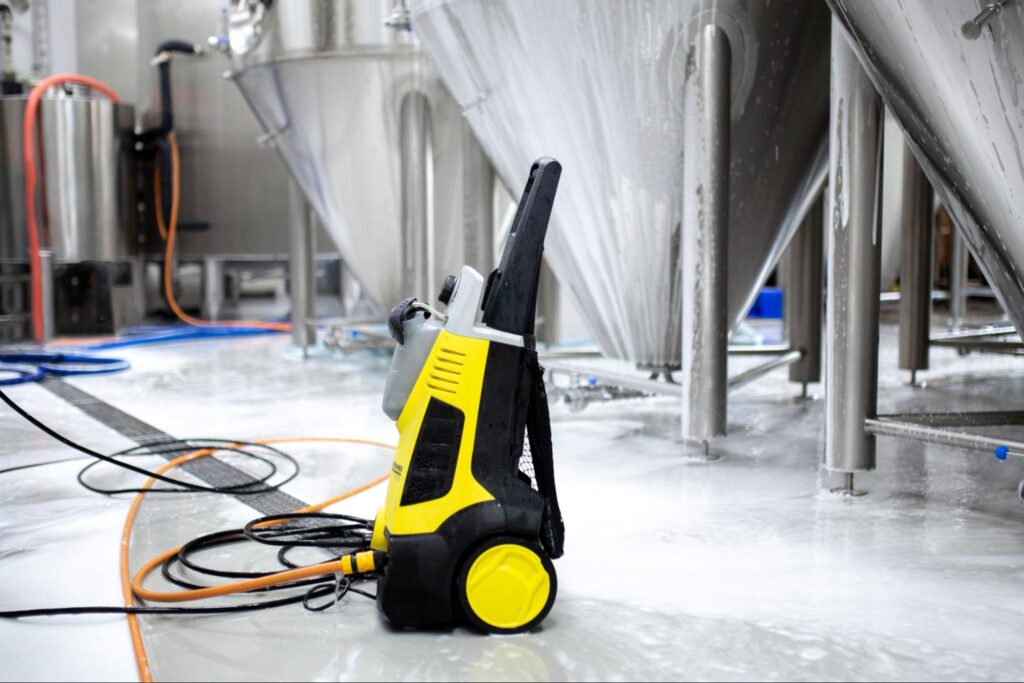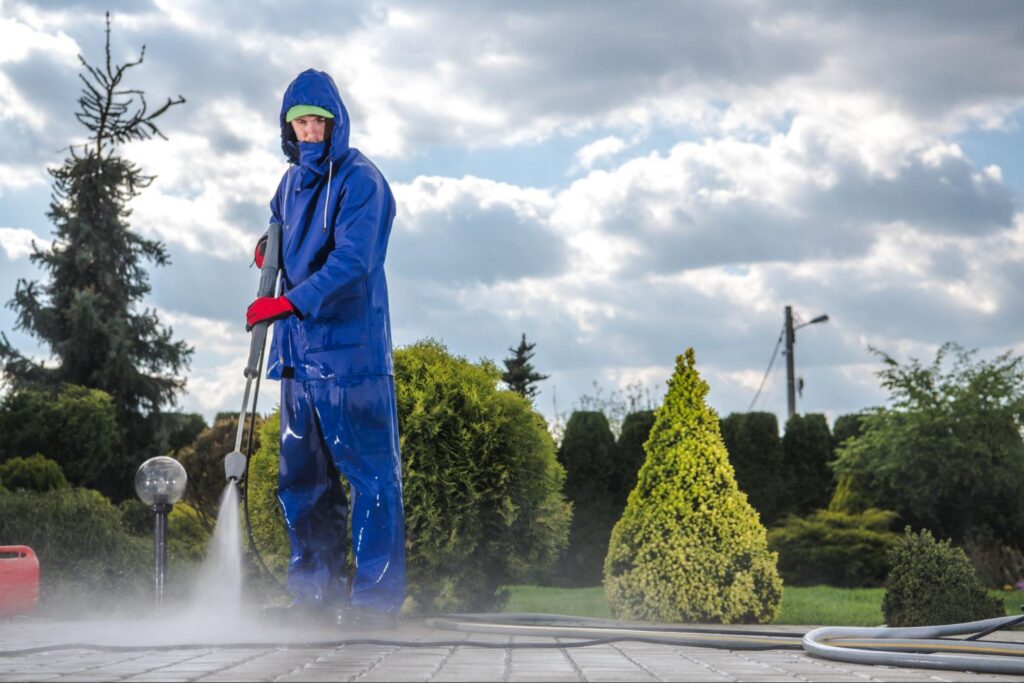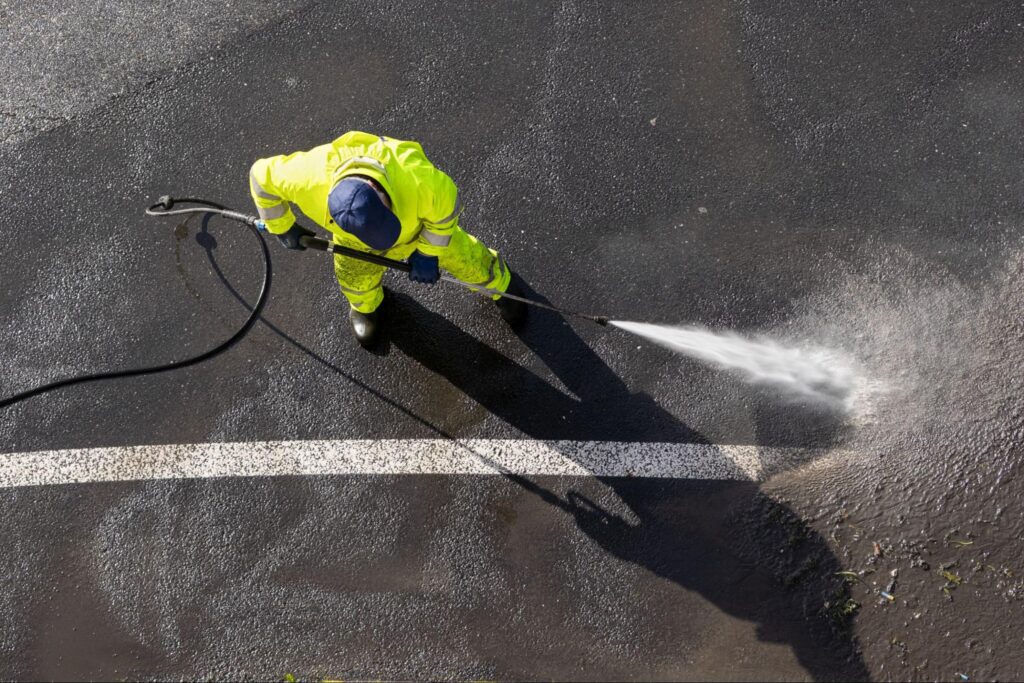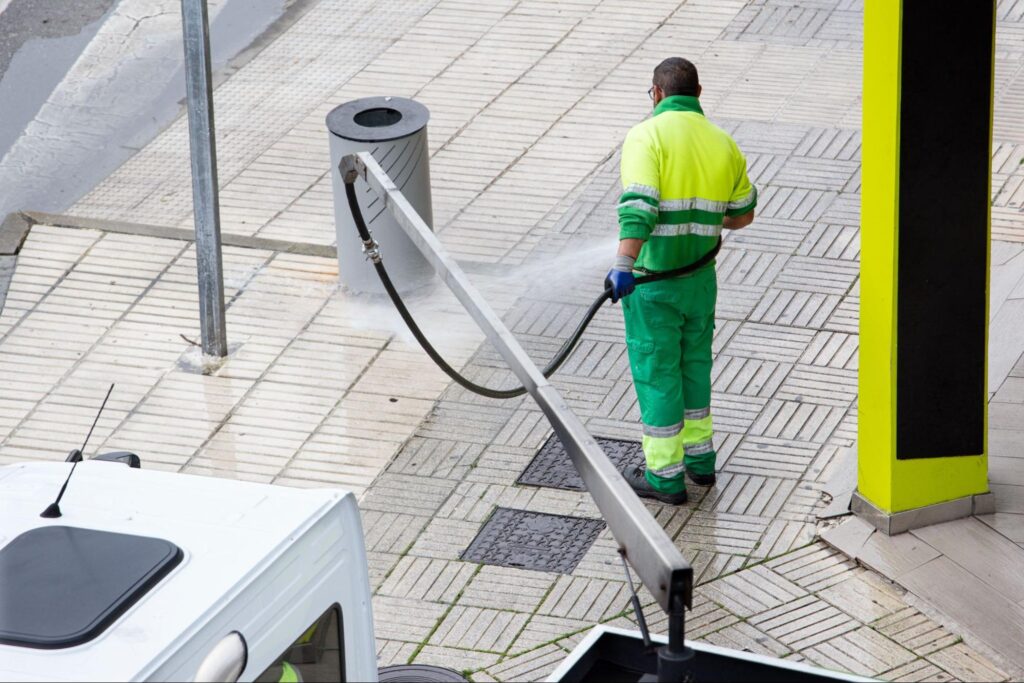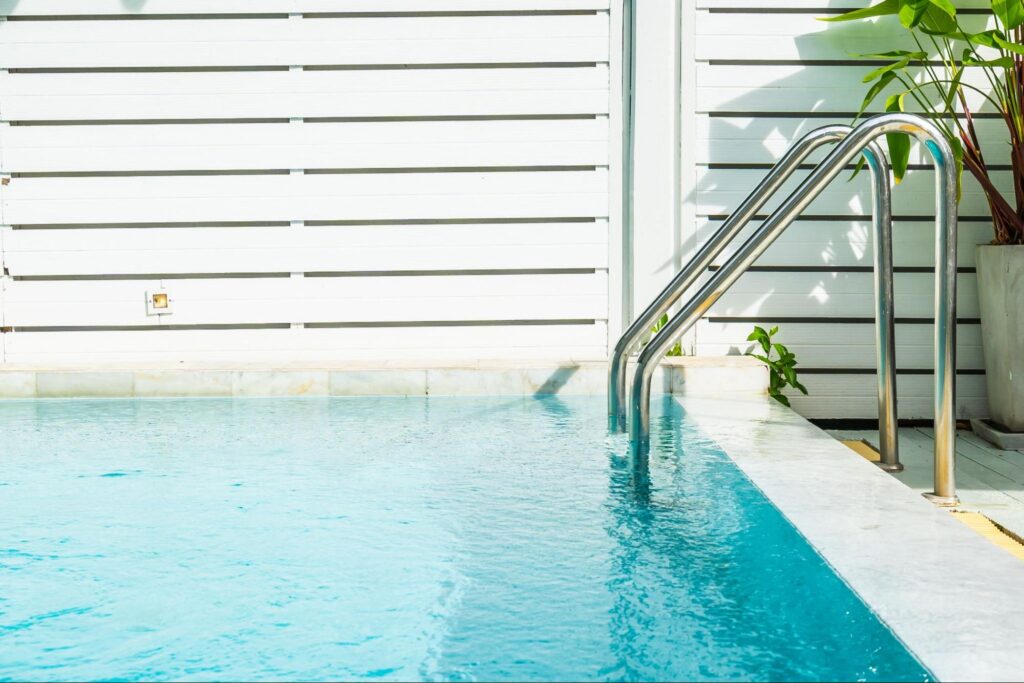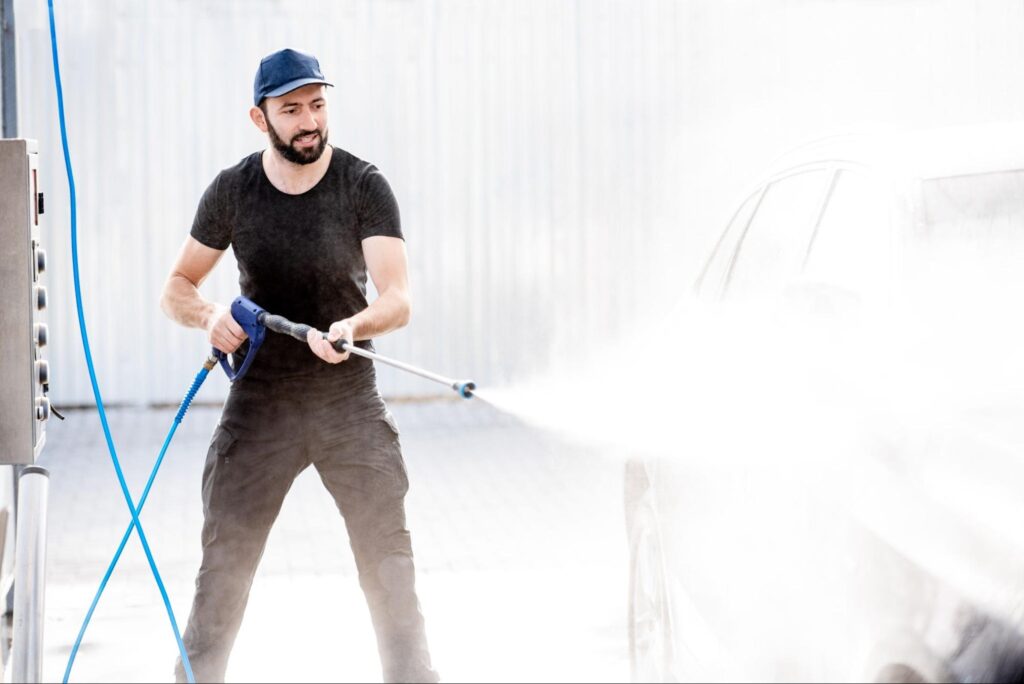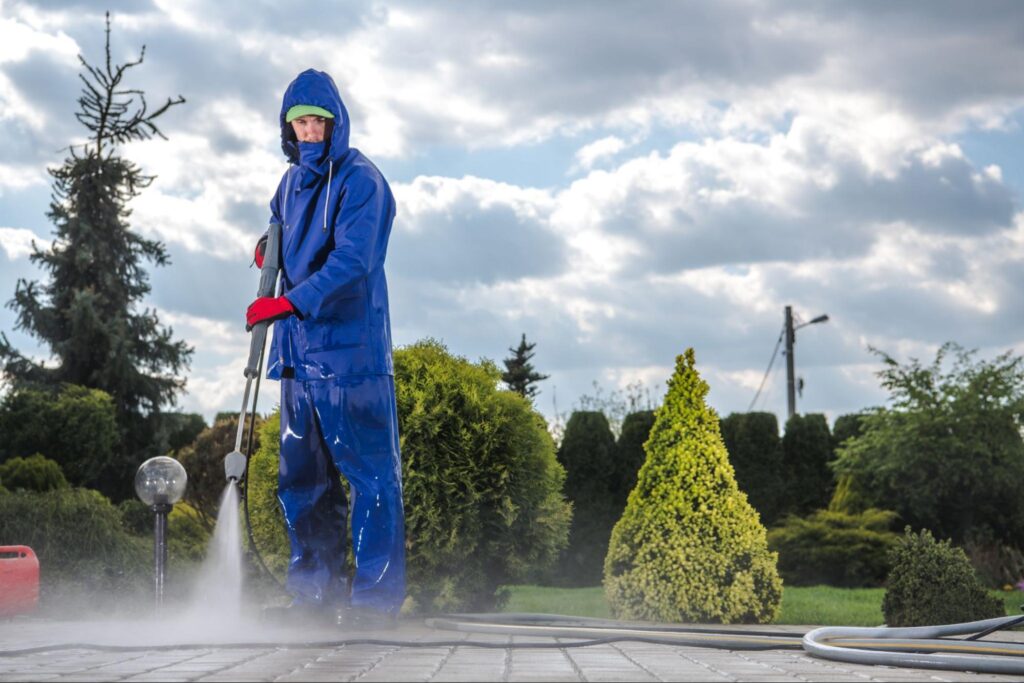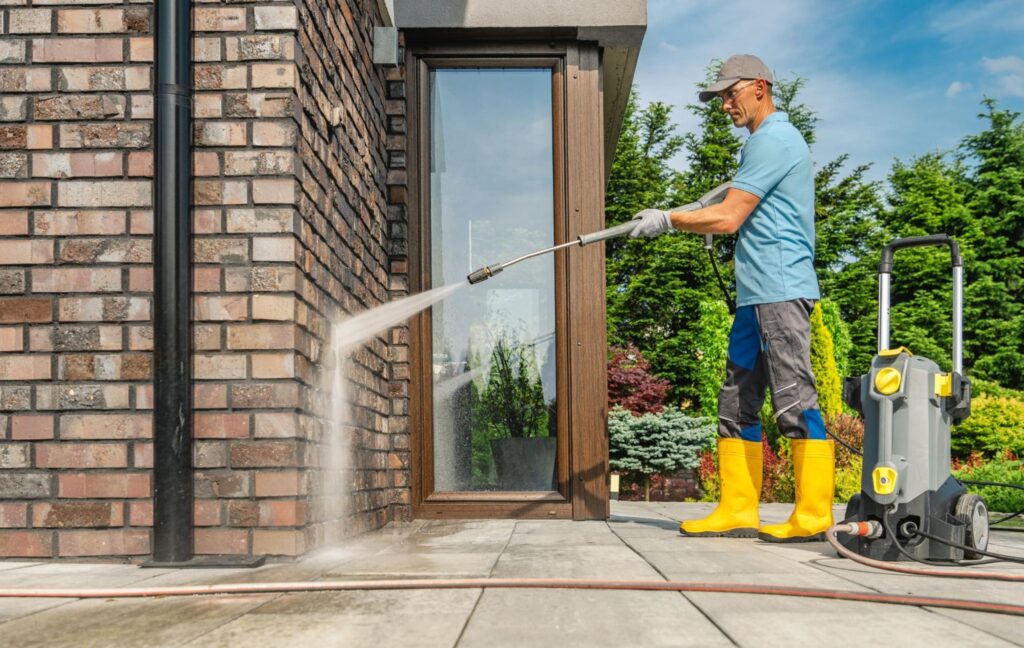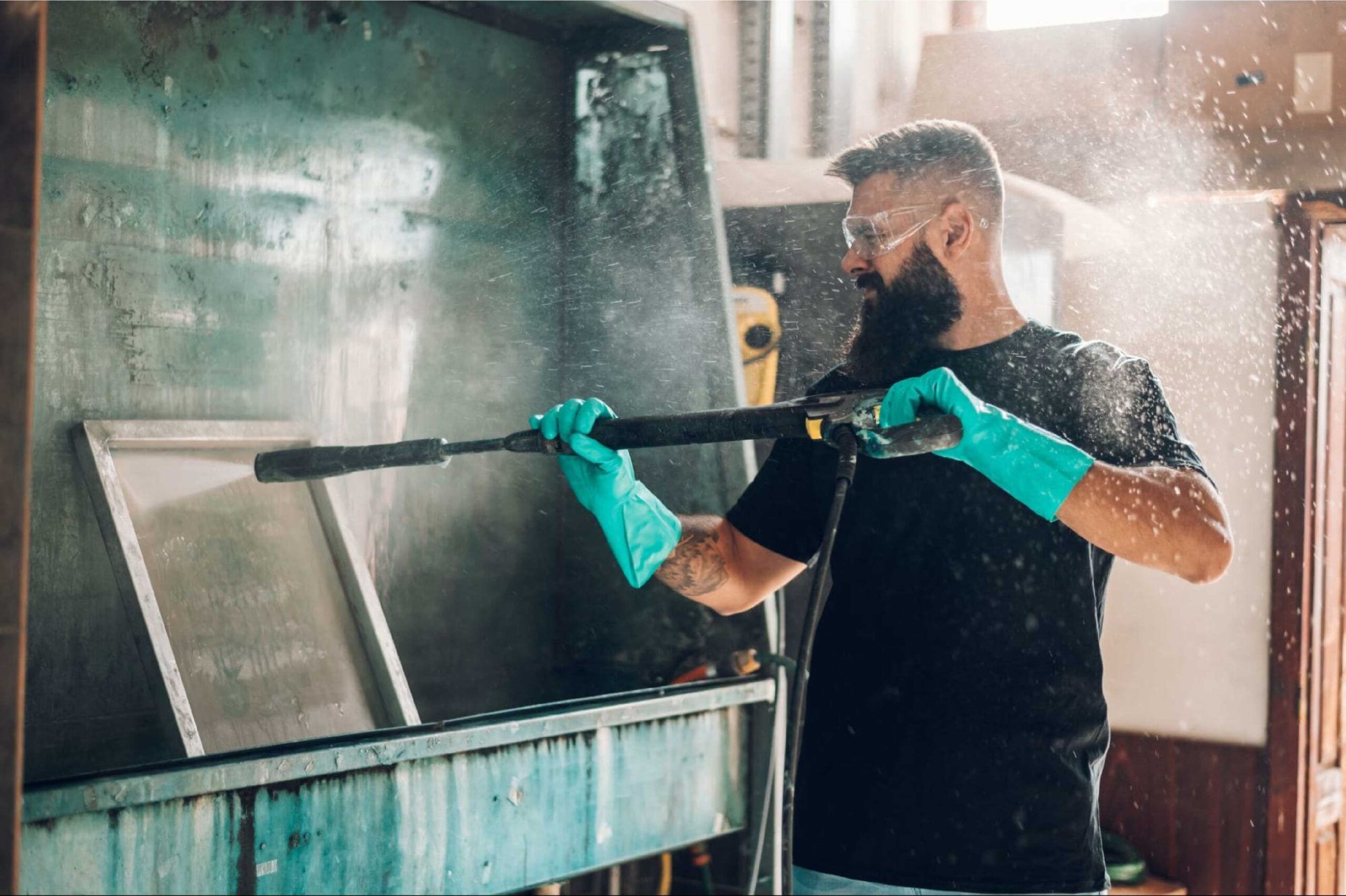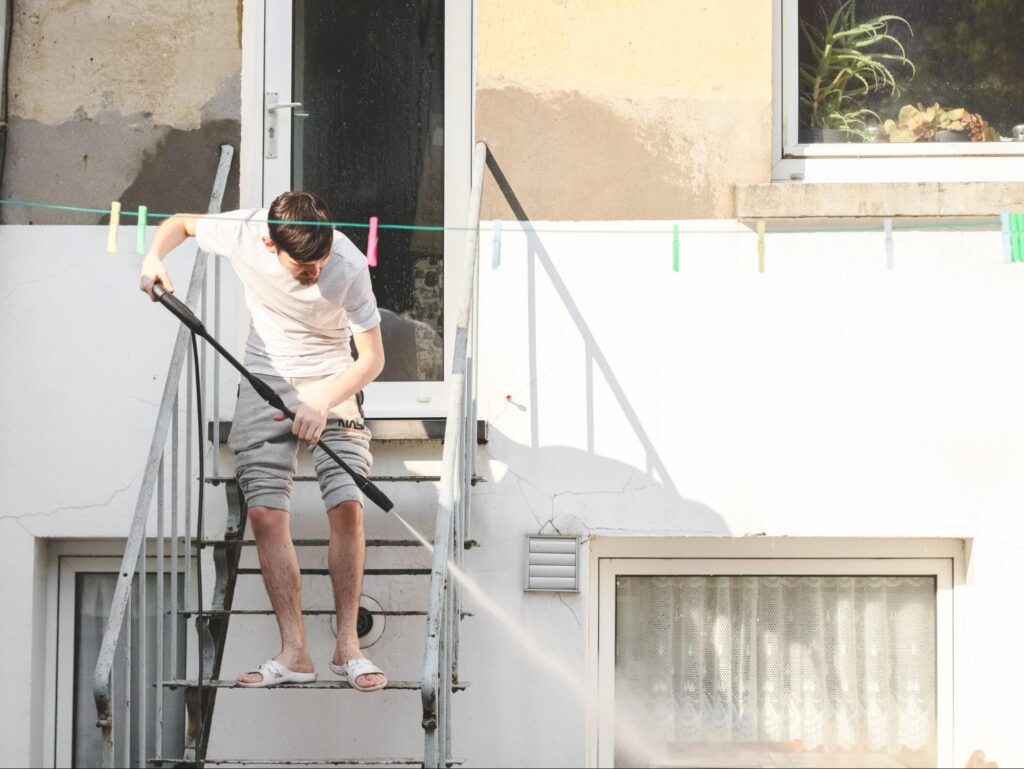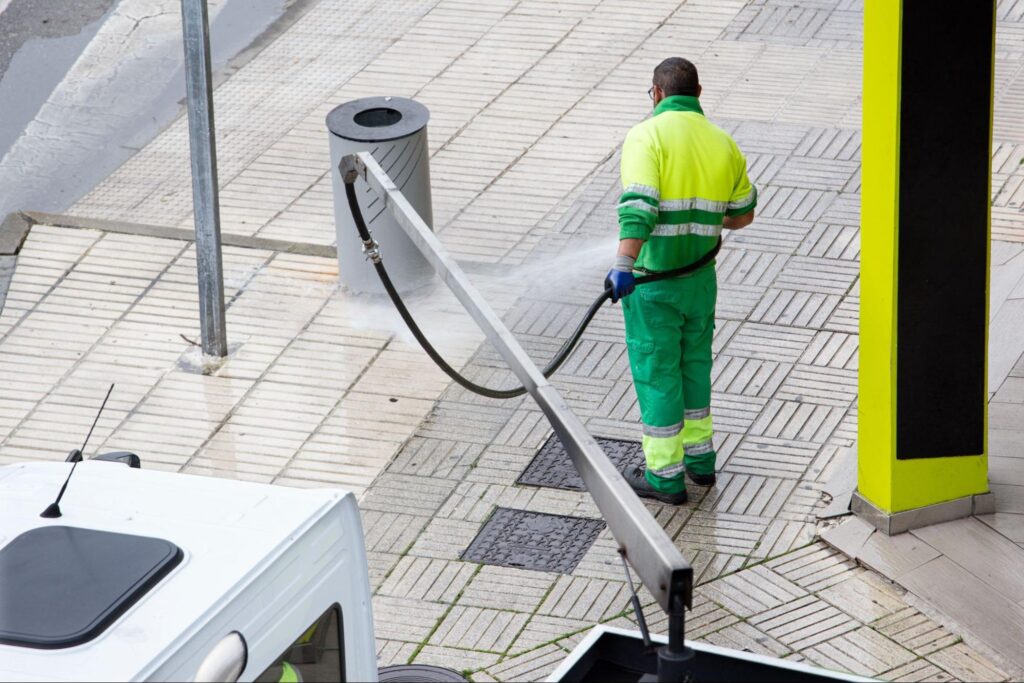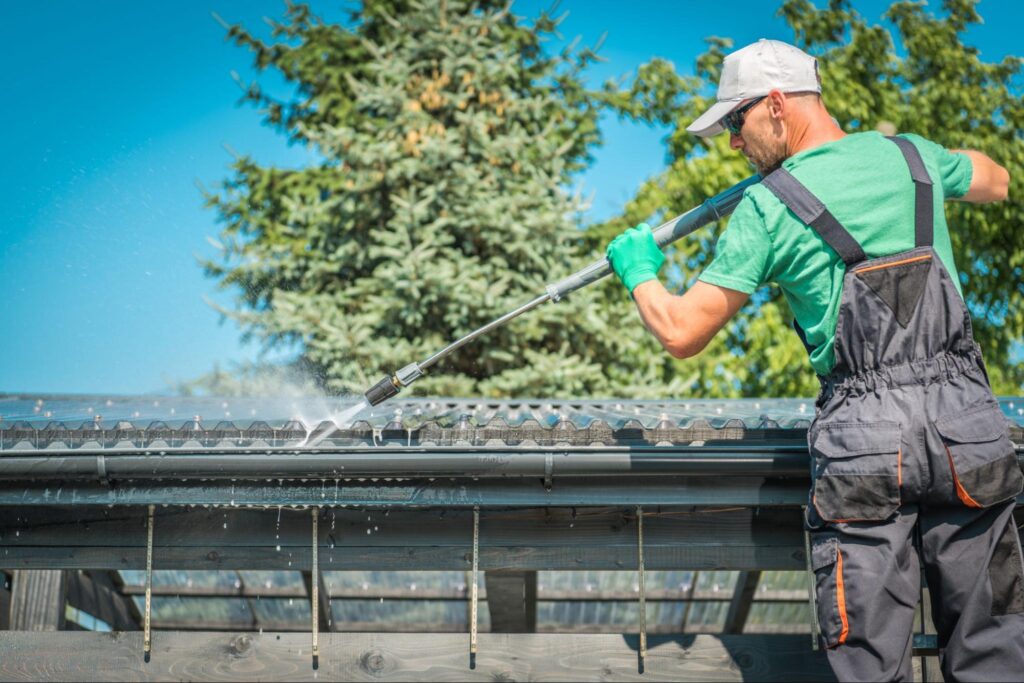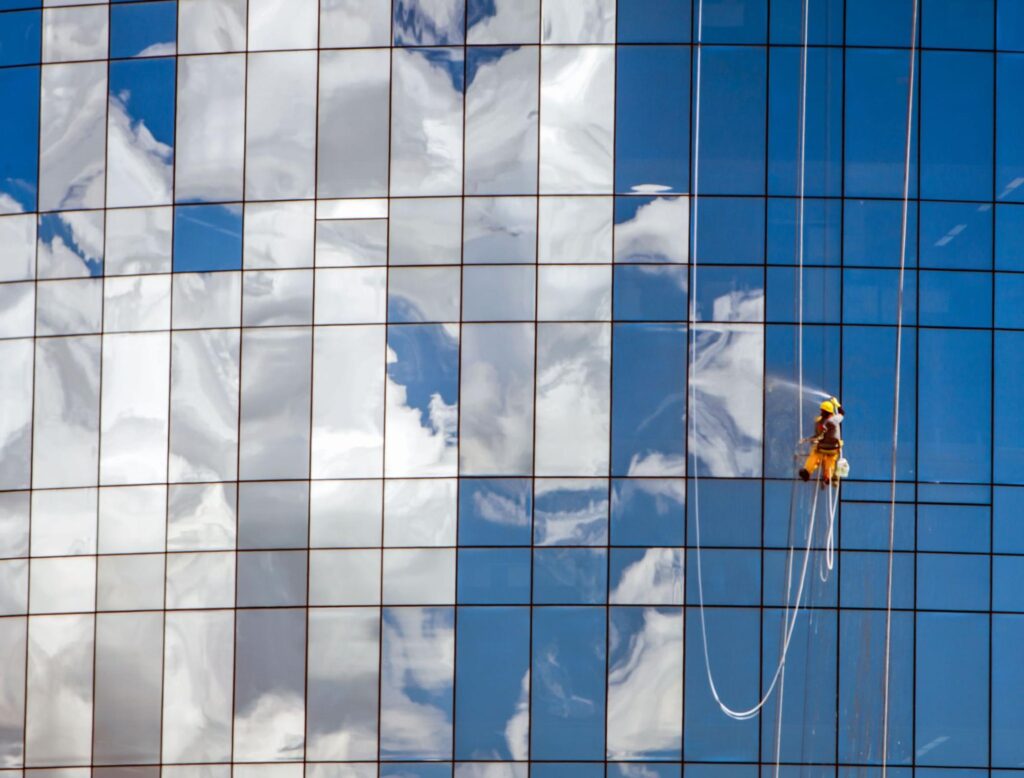The Difference Between Residential and Commercial Pressure Washing
Residential work focuses on driveways, patios, decks, and home siding, typically completed in a few hours using lighter equipment and simple traffic control. In contrast, commercial pressure washing spans storefronts, warehouses, restaurants, parking garages, loading docks, campuses, and multi-building portfolios. The jobs are larger, the surfaces more varied, and the tolerances tighter because operations, customers, and brand standards are at stake. That scale changes everything—from the chemistry chosen to the documentation required—so the planning, tools, and safety protocols must rise to meet the site’s complexity.
Commercial Pressure Washing Equipment Output and Water Temperature
The most obvious technical difference is machine output. Home units often deliver modest gallons per minute and rely on cold water, which limits speed on grease and heavy soils. Commercial pressure washing leans on higher flow for faster coverage and superior rinsing, and many rigs add heat to break bonds with oil, fats, and chewing gum. With greater throughput comes sturdier pumps, longer duty cycles, and accessories sized to keep up without striping or stalling.
PSI and GPM Basics
Flow moves soil and shortens job time, while pressure provides the cutting action—rebalance both for optimal surface performance.
Why Hot Water Helps
Heat accelerates detergents and melts oily residues, enabling lower pressure and safer results on many substrates.
Duty Cycle and Power Source
Commercial rigs are built to run all day with gas or diesel power and robust pumps that tolerate continuous use.
Commercial Pressure Washing Chemistry and Surface Risk
Residues differ across settings: food oils on sidewalks, hydraulic fluid on docks, carbon soot on façades, and biological growth in shaded courtyards. Commercial pressure washing pairs surface-specific detergents with lower-impact techniques to protect coatings, sealants, and signage. The goal is to let chemistry loosen the load so tools can operate at safer pressures, avoiding etching on concrete, lifting on paint, or fuzzing on wood.
Detergent Selection Matters
Choosing the right cleaner reduces required force and preserves finishes while speeding rinses.
Coatings and Sensitive Materials
Films, anodized aluminum, and vinyl graphics demand gentle approaches and controlled dwell times.
Soft Washing When Appropriate
Some façades clean best with low pressure and targeted chemistry to prevent damage and streaks.
Commercial Pressure Washing Access, Logistics, and Scheduling
At home, access is straightforward—park in the driveway and start cleaning. On commercial sites, loading zones, fire lanes, and pedestrian routes dictate when and how crews can stage. Work may occur overnight to prevent disruptions to customers and protect drying times before opening. Coordination with property management also covers elevator use, water supply permissions, and lockout zones, ensuring the project runs smoothly without disrupting tenants or critical operations.
Safety Standards and Training for Commercial Pressure Washing
Safety widens from personal protective equipment into public risk management. Crews work near vehicle traffic, pedestrians, and overhead hazards, often on elevated surfaces or near electrical infrastructure. Commercial pressure washing programs emphasize job hazard analysis, secure hose routing, anti-slip measures, and clear communication with onsite teams. The safety bar is higher because the exposure is higher.
Fall Protection and Edges
Railings, parapets, and elevated decks require controls to prevent slips and falls during wet work.
Job Hazard Analysis
Daily briefings identify line-of-fire risks, electrical proximity, and changing site conditions before work begins.
Protecting the Public
Cones, signage, and spotters keep passersby out of spray zones and away from hoses.
Commercial Pressure Washing Environmental Rules and Wastewater Handling
Residential rinsing often flows to the landscape or storm drains without extraordinary measures. Many commercial properties are subject to stricter discharge rules that require capturing, filtering, or redirecting wastewater. Commercial pressure washing frequently includes vacuum recovery, berms, and portable filtration to remove solids and emulsified oils before disposal. These controls protect nearby waterways and keep sites in compliance with local ordinances and lease agreements.
Water Recovery Strategies
Surface dams and vacuum units corral runoff so it can be treated rather than entering storm systems.
Permits and Compliance
Some jurisdictions require records of chemicals used and proof of proper wastewater disposal.
Overspray and Drift
Shrouds, guards, and smart nozzle choices limit atomization that could affect landscaping or storefronts.
Quality Control and Finish Expectations of Commercial Pressure Washing
Homeowners want a driveway that looks clean in natural light; commercial owners need uniformity that stands up to bright retail lighting, security cameras, and customer scrutiny. That drives methodical lane overlaps, standardized dwell times, and final inspections from multiple angles. Commercial pressure washing crews often conduct test patches, measure total dissolved solids in rinse water for spot-free drying, and document before-and-after conditions so stakeholders can verify results.
Commercial Pressure Washing Pricing, Proposals, and Documentation
Residential quotes are typically all-inclusive and straightforward. Commercial pressure washing proposals break out line items for surface areas, gum removal counts, degreasing, recovery system setup, after-hours labor, and access equipment. They also outline safety plans, certificates of insurance, and schedules. Clear scopes reduce change orders and help property managers compare vendors on equal terms.
Define the Scope
Square footage, stain types, access limits, and water source details should be included in writing.
Set Measurable Outcomes
Targets like gum count reduction and spot-free glass near entries align expectations.
Provide Photo Reports
Time-stamped images and notes create transparency for owners and tenants.
Commercial Pressure Washing Maintenance Schedule and Contracts
Homes might be cleaned annually or after major seasons. Retail and hospitality sites may need monthly or quarterly service to keep entrances bright and slip risk low, while industrial yards may follow spill-driven schedules. Commercial pressure washing contracts often bundle routine cleaning with emergency response provisions, ensuring rapid attention when oil hits asphalt or a food spill threatens walkability.
How Surfaces and Substrates Respond Differently to Commercial Pressure Washing
A residential mix centers on concrete, brick, vinyl siding, and wood decks. Commercial portfolios add sealed concrete, epoxy floors, pavers with polymeric sand, EIFS façades, stainless bollards, and coated loading docks. Each substrate sets limits for pressure, heat, and chemistry. Commercial pressure washing teams bring multiple nozzle orifices, surface cleaners sized to machine flow, and test protocols to safeguard both texture and color.
Protecting Joint Sand
Pavers require lighter passes and a controlled rinse to avoid washing out bedding material.
Coated Floors Need Care
Epoxy and urethane finishes prefer moderate pressure and compatible detergents to prevent dulling.
EIFS and Stucco Sensitivity
Low pressure and broad fans prevent water intrusion and surface scarring.
Choosing a Commercial Pressure Washing Provider that Fits Your Property
The right partner blends technical capability with planning discipline. Look for transparent scopes, recovery readiness, and trained crews who can pivot between hot water degreasing, soft washing, and surface cleaning without risking finishes. Ask how they monitor conditions, protect bystanders, and document compliance. When done well, commercial pressure washing delivers not just clean surfaces but also safer walkways, better first impressions, and fewer maintenance surprises between service visits.
Visit the A Plus Power Cleaning blog learn more about the benefits of commercial pressure washing.
Recent Post
-
The Difference Between Street Cleaning and Parking Lot Cleaning Services
-
Roof Pressure Washing vs. Soft Washing: Which Is Better for Your Home?
-
The Best Time of Year to Schedule Gutter Cleaning Services
-
Why DIY Pressure Washing Can Damage Your Property
-
Manual vs. Powered Gutter Cleaning Tools: Which Works Best?
-
The Science Behind Industrial Pressure Washer Power and Efficiency
-
How a Commercial Pressure Washer Helps Maintain Commercial Properties
-
Water Delivery for Pools: What Homeowners Should Know Before Filling
-
Why Homeowners Trust Local Pressure Washing Companies
-
How Often Should You Schedule House Pressure Washing?
-
How Modern Technology Improves Pressure Washing Equipment Performance
-
What to Expect When You Call a Pressure Wash Business
-
The Step-by-Step Process of Professional Parking Lot Cleaning
-
How a Commercial Surface Cleaner Helps Maintain Sidewalks and Parking Lots
-
Why More Homeowners Rely on Pool Water Delivery Services
-
How a Gutter Cleaner Helps Protect Roofs and Foundations
-
The Difference Between DIY and Professional Pressure Wash Services
-
What Pressure Washer Companies Do and Why You Need Them
-
Pressure Washing vs. Soft Washing: Which Is Right for Your House?
-
Top Industries That Rely on Industrial Pressure Washing
-
The Benefits of Using a Pressure Washer for House Exteriors
-
The Difference Between Residential and Commercial Pressure Washing
-
What Is a Pressure Washer Surface Cleaner and How Does It Work?
-
The Importance of Regular Gutter Cleaning for Home Maintenance
-
How Weather Conditions Affect High Rise Window Cleaning
-
What Pressure Washing Equipment is Needed for Residential Spaces?
-
What Pressure Washing Equipment is Needed for Residential Spaces?
-
Best Times for Driveway Pressure Washing
-
Pressure Wash vs. Power Wash: What's the Difference?
-
How Often Should You Invest in Roof Gutter Cleaning?
-
Best Pressure Washing Company Near Me in Austell, GA
-
Top Power Wash Company Near Me in Chamblee, GA
-
Top Powerwash Company Near Me in Atlanta, GA
-
Top Pressure Cleaning Companies Near Me Austell, GA: A Plus Power Cleaning
-
Top Pressure Washing Companies Near Me Chamblee, GA: A Plus Power Cleaning
-
Top Pressure Cleaning Companies Near Me Atlanta, GA: A Guide to Power Cleaning Services
-
Best Electric Pressure Washer in Atlanta
-
How Much Does Roof Cleaning Cost in Marietta, GA and Atlanta, GA?
-
How Much Does Pressure Washing Cost in Georgia?
-
What is the Difference Between Power Washing and Pressure Washing


